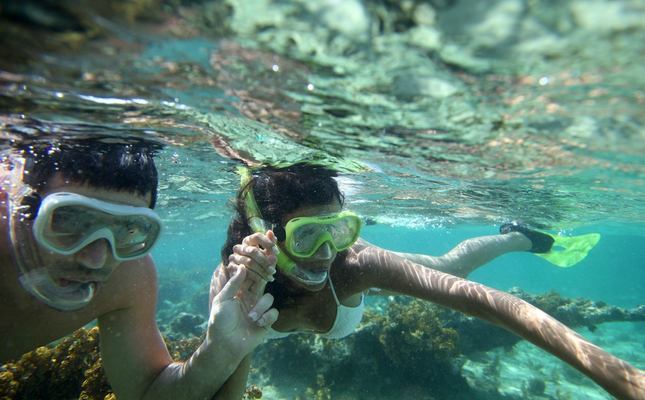[fshow photosetid=72157629779924684]
At a dive shop in Turks & Caicos, as I was rummaging through their leaflets, a simple brochure jumped out at me (one that I still keep with me till this day). “Attention Divers & Snorkelers”, it said in big fonts on the front, followed by a short description of the islands.
“Colonial history spanning 300 years, Indian occupation reaching back 1,200 years”. It then talked about underwater landscapes made up of objects which were either tossed overboard or lost in the islands’ history. It ended with a request from the government, as well as the national museum, that should a diver or snorkeler find something on their dive, to leave it in place and/or contact the mentioned organizations if the item seemed like something of historical value. I wasn’t planning to be plundering the seabed on my holidays, but this brochure was tantalizing in its possibility of underwater treasures. A deposit later, the dive trip was booked for later in the week.
Turtle Cove Marina
We decided to get acclimatized to the Caribbean by heading to Aqua Bar & Terrace in Turtle Cove Marina. I like yachts, and I like the vibe at marinas. They remind me of a contrived playground with everyone showing off their sun-kissed tans from mandatory white clothing, and where all the souls strolling around seem carefree. “Which wrong turn did I take to lead me to a desk at a cubicle?” I wondered. Then reminded myself that they don’t call it a getaway for nothing – superyachts in the water, treasures under the sea, and a big blue dive booked. Let the holidays begin!
Between golfing and hanging out on the beach, I had some time to research more on Turks & Caicos beyond my preliminary googling. Admittedly, with the lure of the Caribbean, I wasn’t exactly weighing the pro’s and con’s before reluctantly signing up on the trip. The colonial history that the “message-in-a-bottle-esque” brochure talked about included the Spanish, French, and British powers. And, shiver me timbers, the islands were once pirate hideouts too.
Liberty in paradise
An estimated 168 ancestors of the current inhabitants arrived on the island – mainly Grand Turk – in 1841 when their ship sank near East Caicos en-route to Cuba. The doomed ship, Trouvadore, was a Spanish slave ship, and reportedly the only known shipwreck of its kind that was engaged in the illegal slave trade (slavery was technically outlawed in Spain at the time but when Spanish-controlled Cuba needed manpower for its sugar plantations, a blind eye was conveniently turned). Slavery had also been outlawed on the British-controlled territory for 7 or so years before the ship wrecked, so the passengers were set free. So where’s the ship now? In 2004, a newly discovered wreck was named “Black Rock Wreck” due to its uncertain identity. Dives and testings later, experts would conjecture this mysterious wreck laying off the coast of East Caicos to be the Trouvadore.
Undersea ghosts
200 miles long by 65 miles wide, a kaleidoscopic coral reef fringes the 40 cayes that make up the Turks & Caicos group of islands. The diving action here ranks in PADI’s top 10 best dive spots in the world, a good gauge, for they’re the largest diving organization in the world. The Trouvadore is just 1 of a reported 1,000+ shipwrecks that litter the ocean bed around the islands. None of us were certified wreck divers though, so we went for 2 dives into the Big Blue first. Princess Alexandra National Park draws a big protective boundary around Provo, sand with no big game nor commercial fishing allowed, less boats zig zag the water, and more fish to swim at will under the surface. Dive spots around Turks & Caicos all sport quite descriptive names, from Eagle Ray Pass (Pine Cay), Grouper Hole (Grace Bay), Shark Hotel (North West Point).
We headed out to West Caicos, home to six miles of protected reef walls just over a hundred meters off shore. For those who have never experienced SCUBA diving in pristine seas, the water clarity and vibrant biodiversity is reminiscent of the ‘aquarium’ screensavers on the computer that were oh-so-cool a decade ago. Except this time, we’re talking about 30 meters of water clarity with much much bigger fish. Fortunately, our divemaster showed us images of what lay beneath so we could identify them – Hawksbill turtles, spotted eagle rays, and some of the most amazing coral formations, sponges, and fields of anemone. We even spotted hammerhead sharks lurking at the edge of the watery horizon, which was not an every-dive sighting. We took a break between dives to go shoreside for a lunch, which we wolfed down before doing some snorkeling just off the beach. Reef fish in a riot of colors was a pleasant way to wrap up lunch. After our second dive, with more colors and biodiversity that I ever knew existed, we headed back, with bottlenose dolphins playing in the wake of our boat to send us off.
Taking home the crown
The TripAdvisor Travelers’ Choice Beach Awards 2011 placed 7 Caribbean sites in the top 10 worldwide list. Taking home the crown, along with bragging rights for the inaugural champion, is Providenciales in Turks & Caicos. The islands also rank in PADI’s top 10 best dive spots in the world. And even though I did not find any shiny metal on the ocean floor, Turks and Caicos gave me my best dives to date – and aye, me parrot concurs!
For exploring the Big Blue, Turks & Caicos’ Tourist Board (http://www.turksandcaicostourism.com) lists a handful of snorkeling and diving operators offering everything from private excursions to eco-adventures. Some of the most popular dive sites around the islands are:
- Providenciales Princess Alexandra National park
- Providenciales Northwest Point
- West Caicos
- French Cay
- Pine Cay
- North Caicos
- Middle Caicos
- Grand Turk
- Salt Cay

